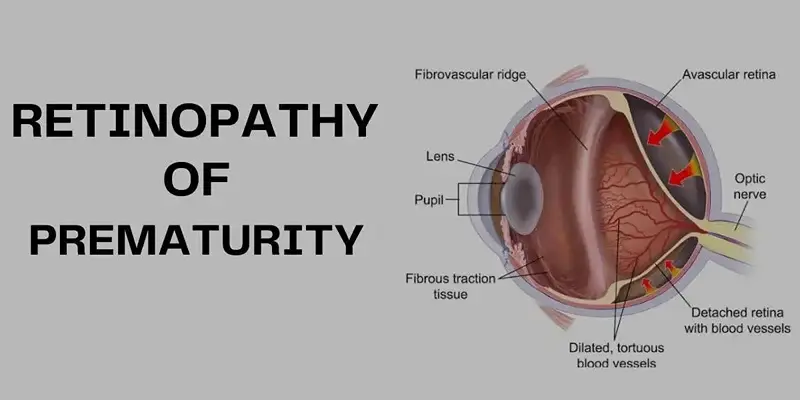Retinopathy of Prematurity (ROP)
Retinopathy of Prematurity (ROP)
Retinopathy of Prematurity (ROP) is an eye disease that affects premature babies. It occurs when abnormal blood vessels grow in the retina — the light-sensitive layer at the back of the eye.
In severe cases, ROP can cause scarring, detached retina, or even blindness if not detected and treated in time.
What Causes ROP?
Before birth, a baby’s eye develops blood vessels that supply oxygen to the retina. In babies born too early (before 31 weeks or under 1.5 kg), these blood vessels may stop developing normally and grow in an abnormal way.
This abnormal growth can:
- Leak fluid or bleed
- Cause scar tissue
- Pull the retina out of place (retinal detachment)
Retinal Care
Who’s at Risk?
ROP mostly affects:
- Babies born before 31 weeks
- Babies weighing less than 1500 grams (3.3 lbs)
- Babies who received oxygen therapy
- Babies with unstable general health after birth
Not all premature babies get ROP, and many cases are mild and heal on their own.
Symptoms
ROP does not cause symptoms that parents can see. Only an eye exam by a retinal specialist can detect it.
How Is ROP Diagnosed?
A retinal examination is done using dilating eye drops and a special lens. Screening typically starts a few weeks after birth in NICU babies who meet risk criteria.
ROP is classified into 5 stages — from mild (Stage 1) to severe (Stage 5, total retinal detachment).
Treatment Options
Mild ROP
- Often resolves on its own
- Close monitoring is needed
Moderate to Severe ROP
- May require treatment to prevent vision loss
- Options include:
1. Laser therapy
- Destroys areas of retina where abnormal vessels grow
- Helps stop further damage
2. Anti-VEGF injections
- Medication injected into the eye to stop abnormal vessel growth
- Often used for aggressive or posterior ROP
3. Surgery
- For retinal detachment (Stage 4 or 5)
- May include vitrectomy or scleral buckle
Long-Term Follow-Up
Babies who had ROP — even mild — should have regular eye exams through childhood. They are at higher risk for:
- Nearsightedness (myopia)
- Strabismus (eye misalignment)
- Lazy eye (amblyopia)
- Retinal detachment later in life
Frequently Asked Questions
Most ROP cases are mild and improve without causing vision loss. Early detection is key.
It can’t always be prevented, but careful control of oxygen in NICUs and early screening help reduce risk.
Doctors use local anesthesia or sedation. Babies are closely monitored during treatment.
Many children with a history of ROP develop nearsightedness and may need glasses.
Retinopathy of Prematurity (ROP)

Patient Guide Download
Want to read more? Download this trusted guide from the National Eye Institute:
Retinopathy of Prematurity (ROP)
Laser Surgery for ROP
Medication Injections for ROP
